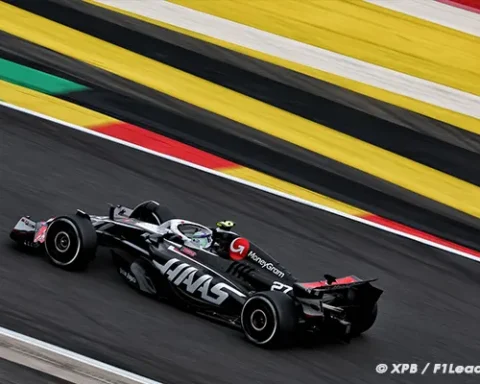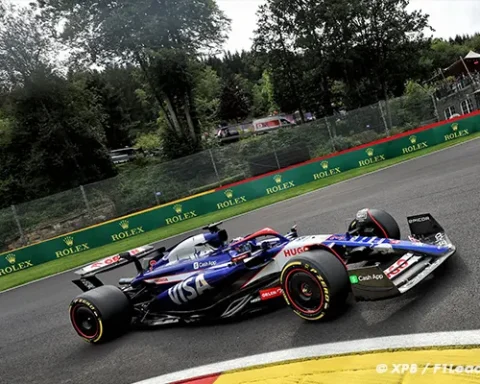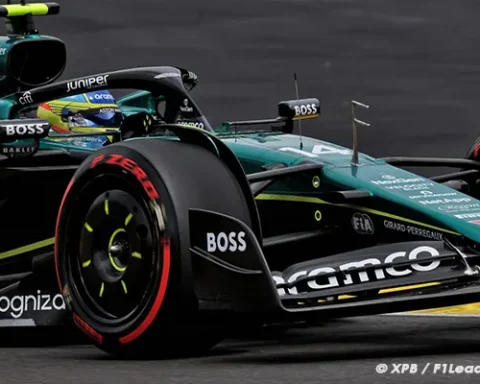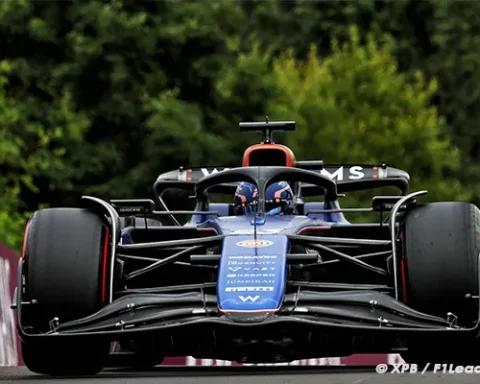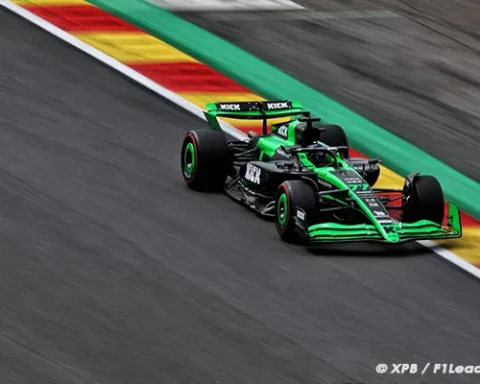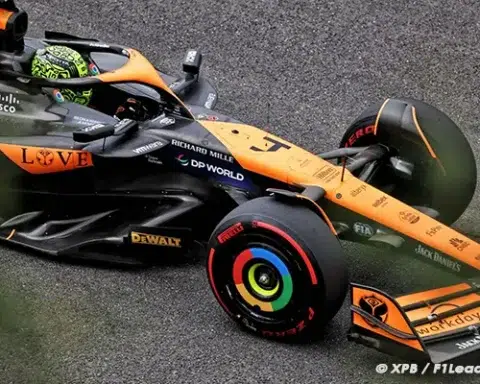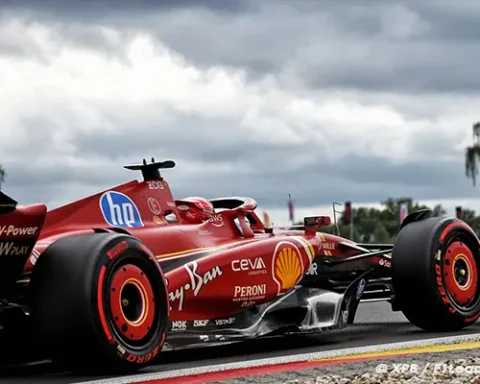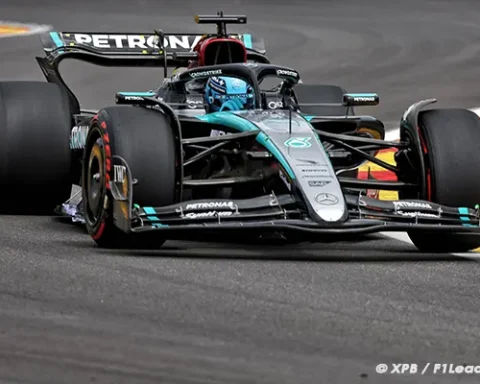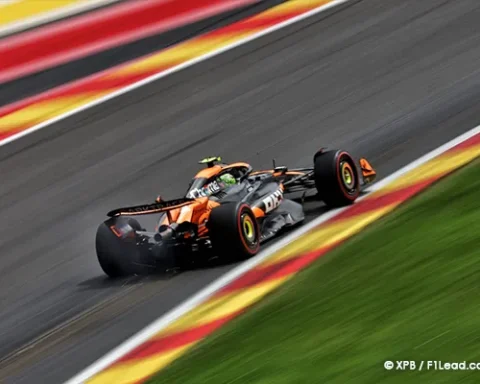In 2007, Formula 1 introduced a controversial rule change regarding Safety Car procedures. This rule mandated the immediate closure of the pit lane when the Safety Car was deployed, with it reopening only once all cars had formed a queue behind the Safety Car. This meant that drivers were prohibited from making pit stops until the pit lane was officially reopened by race control.
This rule change had significant repercussions in two of Formula 1’s most contentious moments. One of these incidents unfolded during the infamous ‘crashgate’ scandal at the 2008 Singapore Grand Prix. Nelson Piquet Jr. intentionally caused a crash to trigger the Safety Car, enabling his teammate, Fernando Alonso, to make a strategic pit stop and ultimately win the race. This rule was eventually abolished in 2009, but its impact persisted in races like the 2021 Abu Dhabi Grand Prix, where Max Verstappen made a last-minute pit stop to secure the championship, a feat impossible under the 2007 rule.
Since the 2021 Abu Dhabi Grand Prix, F1 has seen an increase in rule-related controversies. The debate intensifies over whether regulations are being enforced fairly and effectively in the high-stakes world of Formula 1.
It must be said that the latest GPs have revealed several regulatory flaws, uncertainties, or injustices – issues the FIA would do well to resolve.
Progress is nevertheless notable under Niels Wittich, the FIA race director. However, the Federation, located at Place de la Concorde, also faces significant turnover, complicating matters.
A brief overview…
Should 5-second penalties be banned?
This is the fight Lando Norris and Alexander Albon have taken up: to enforce harsher penalties (particularly the 5-second ones).
The McLaren and Williams drivers target specific situations: when a faster driver overtakes another car off-track, doesn’t return the position, and thus incurs a five-second penalty. However, this penalty can be profitable: the driver doesn’t lose time in traffic and “gains” more than five seconds by forcing the maneuver.
In this case, Norris and Albon were thinking of George Russell‘s off-track move at the last Grand Prix in Austin on Oscar Piastri.
“If you’re faster, you can overtake someone and easily pull a five-second gap,” Lando Norris pointed out. “Penalties should generally be harsher. It will prevent people from doing it.”
“It’s a stupid penalty,” Alexander Albon commented on the five-second penalties, “I’ve talked about this several times; it penalizes a slower car and helps a faster car.”
These two incidents underline a fundamental problem: the penalty for illegal overtaking is not sufficiently deterrent. Ultimately, it should not be acceptable to make the imposition of a penalty ‘desirable’.
A simple solution might be to increase the penalty: either the driver immediately returns the place, or he would face a 10 or 15-second penalty, for example.
Traffic jams in qualifying
Year after year, drivers denounce this as dangerous: traffic jams at the end of qualifying sessions, in the last sector.
The danger is easily explained: drivers wanting space in front to start their lap as cleanly as possible slow down in the last sector (to let cars ahead gain distance); this creates the traffic jam.
At the same time, drivers completing their lap can come at high speed upon those slowing down in the last sector.
This leads to very dangerous situations, especially in Monza. Hence, Niels Wittich took countermeasures in Italy: enforcing minimum lap times for in and out laps.
The measure seemed effective, but… many drivers did not comply! As a result, many were summoned to the stewards after qualifying for exceeding the time limit. And none were penalized. The rule was not respected, but no action followed. So, why comply?
“The maximum lap time in quali was a joke this season,” grumbled Fred Vasseur.
“I think Russell went to the stewards 14 times and never got penalized. It means either the rule is not good, or the stewards aren’t applying it. But it makes no sense to have a rule if no measures are taken when it’s not followed.”
Fernando Alonso (joined by Carlos Sainz) suggested a solution to this situation: returning to single-lap qualifying, like in the old days.
“It’s a topic that comes up every weekend, especially on short circuits. One solution is to have single-lap qualifying, like in the past. That would be ideal, in my opinion, because there’s only one car on track. We’d have complete TV coverage for that lap, for everyone’s sponsors, and things like that. And it could create more spectacle in case of weather changes during qualifying – you could see different cars in pole position, different names. So that would be, I think, the option I’d prefer,” proposed the Aston Martin F1 driver.
Track Limits: When Will There Be a Clear Rule?
“Stay within the white lines.” This instruction might seem straightforward, but in reality, adhering to it becomes a complex challenge for drivers, stewards, and especially viewers.
Track limits are a recurring issue at certain circuits. The situation reached its peak last year at the Austrian Grand Prix, where over 150 track limit violations were recorded and addressed by the stewards… during the race! And then, they had to review 1000 more after the checkered flag…
Viewers weren’t the only ones confused, as it took a long time after the race to determine the final results of the Grand Prix.
Even the stewards were astounded! They had “strongly recommended finding a solution to the track limit issue” at the Red Bull Ring circuit.
The problem was concentrated on the last two turns of the Red Bull Ring.
However, it’s not only in Austria that track limits have marred F1 weekends. In Qatar, Austin, etc., penalties also disrupted the outcomes of qualifying sessions and races, leaving viewers in the dark.
In Texas, Lando Norris even admitted to benefiting from the FIA’s inconsistency and gray areas.
“The rule is it has to be ‘clear enough’ for the FIA. It has to be fundamentally clear that both tires are off the track, and the onboard camera proves nothing… If the rear wheel could potentially be inside, you can’t judge it off track. That’s their viewpoint at the FIA. At turn 6 in Austin, I did it too, (crossing track limits) to be honest. It’s a turn where I knew they couldn’t penalize me because they set a precedent in previous tracks: if you can’t reasonably see the problem, you’ll get away with it. You have to know the gray areas and things you can get away with, and that was the case for me. So, to everyone who did it, I say it was fair play.”
A terrible admission of failure for the FIA…
But the McLaren driver also suggested some potential solutions: installing more cameras outside the track, for the FIA, to better view the white line, for instance.
In Austin, the FIA had also implemented a thicker white line, without spectacular results.
Would gravel be a miracle solution? Not necessarily since in certain specific cases, particularly in the controversial turns at the Red Bull Ring, laying gravel is impossible – the circuit also hosts Moto GP. Asphalt run-offs play an essential role in the safety of motorcycle riders.
Lastly, sausage curbs, which could slow down drivers, have been widely criticized for their danger, as they can ‘launch’ drivers into the air…
In short, there is still no miracle solution for the FIA, or at least no universal solution; perhaps a case-by-case approach is needed, revisiting the configuration of certain turns.
F1’s Growing Rule Controversies Post-2021 Abu Dhabi GP
Since at least the 2021 Abu Dhabi Grand Prix, F1 fans have sometimes felt that there are more races with controversies related to the FIA’s enforcement of regulations than races without controversy…
It must be said that recent GPs have revealed several regulatory gaps, uncertainties, or injustices – issues that the FIA would do well to address.
Progress can nonetheless be acknowledged from Niels Wittich, the FIA’s Race Director. However, the Federation, headquartered at Place de la Concorde, must also deal with significant staff turnover, complicating matters.
Continuing this regulatory overview…
Should drivers who trigger red or yellow flags during qualifying be penalized?
Michael Schumacher, Nico Rosberg, Charles Leclerc, and Sergio Pérez, whether intentionally or unintentionally, experienced this in Monaco: these drivers had set a promising time in the first round of Q3; then, in their second, they caused a yellow or red flag.
For instance, in 2014, after recording the fastest time, Nico Rosberg missed his braking at Portier and went straight on. If it was intentional, it was certainly masterful…
Charles Leclerc, in 2021, had the fastest time in his first Q3 lap… before crashing in his second Q3 lap. He couldn’t start the next day due to a damaged gearbox.
These incidents raise a question: should drivers causing red or yellow flags in qualifying be penalized to prevent any guilty temptation?
This is the case in IndyCar, where for years, the two fastest laps of any driver deemed responsible for a red flag during any qualifying phase are deleted.
FIA Tests New Penalty Rule for Red Flag Incidents in F1
In F1, Carlos Sainz, for example, is among those wanting such a rule, similar to IndyCar’s, to be adopted. “Without commenting on whether it’s true or not,” he highlighted in 2022 about the incident caused by Sergio Pérez in Monaco (crash in Q3), “the truth is that all drivers would like a rule stating that something must be done if someone triggers a red or yellow flag, whether intentional or not, as it compromises other drivers. There has to be a penalty for that. Otherwise, we are all going to start playing with that. And I have seen things happen in recent years, much more than is reported in the media.”
In response to drivers’ requests to trial this rule, the FIA will launch a test this year in F2 and F3. Stewards will have the authority to delete the fastest lap time of a driver deemed “solely responsible for causing a red flag”. Henceforth, Article 33.5 of the sporting regulations will state that a driver causing a red flag ‘may’ be penalized.
The key word here is “may”. The FIA has intentionally chosen this wording to allow the stewards the discretion to decide if the penalty should indeed be imposed. Thus, an exception can be made in extraordinary cases or in the event of an accident.
Changing the Parc Fermé Rules for the Sprint
Are the Parc Fermé rules during sprint weekends too strict for the teams?
In a standard GP format, the directives governing possible adjustments to the settings and structure of the vehicles only come into effect at the time of qualifying – just after FP3.
However, in the 2023 sprint format, qualifying takes place on Friday evening, after just one free practice session.
Teams are therefore required to set final adjustments for the rest of the weekend after only one hour of driving. If a team makes a mistake, which is likely given the limited running time, they will have to drag these poor settings like a ball and chain until Sunday evening.
At Austin, this situation even led to the disqualifications of Lewis Hamilton and Charles Leclerc: Mercedes and Ferrari had not gathered enough data to gauge the excessive wear of the floor. The settings adopted were thus overly permissive.
“If you’ve even slightly misjudged your settings during the Free Practice for the sprint weekend, you’re stuck with that setup for the rest of the sprint weekend. It really sucks,” points out Max Verstappen, who is not a big fan of sprints. “But once you take the wrong turn in terms of settings, there’s no going back. At most, you can push a bit with tire pressure. But if the prescribed values are already very high, then you’re screwed.”
The adjustment to this year’s sprint weekend (re-scheduling the Grand Prix qualifications to the traditional Saturday afternoon slot) could provide an opportunity to change the Parc Fermé rule for sprint weekends. The FIA could thus reposition the start of Parc Fermé to after the sprint race (now planned for Saturday, before the qualifications).
F1 Rule Controversies Increase. F1 Rule Controversies Increase
This Strange Rule on the Red Flag…
A unique aspect of the regulations was highlighted during last year’s Brazilian Grand Prix, significantly impacting the race for Daniel Ricciardo and Oscar Piastri.
Following damage sustained on the initial lap of the race, both drivers had to stop in the pits for repairs while the safety car was on track.
However, on the following lap, a red flag was waved due to the first lap incidents. At this point, the drivers had crossed the timing line in the pit lane.
But, upon the race restart, Ricciardo and Piastri were considered a lap behind the rest of the field.
To clarify, Ricciardo had returned to the garage at the end of the first lap, just like Oscar Piastri, while the other drivers still in the race had completed a second lap before the red flag. Once the other cars passed through the pit lane after the decision to deploy a red flag, they gained a lap’s advantage. However, the Australian couldn’t understand why he wasn’t given the chance to regain his lap.
“I think first and foremost, it highlighted a loophole or something in the rules because I never felt like we had completed a racing lap – and then you already start the race a lap down,” Daniel Ricciardo complained.
Although the case was exceptional, it shed light on a certain inconsistency in the regulations. Normally, during safety car periods, drivers have the opportunity to catch up to the lead lap.
F1 Rule Controversies Increase. F1 Rule Controversies Increase. 2024 F1 Rule Controversies Increase
- ReadMore>RYANAIR TEASES LECLERC ON CONTRACT, FERRARI UNFAZED
- Following us on Facebook and Twitter.

